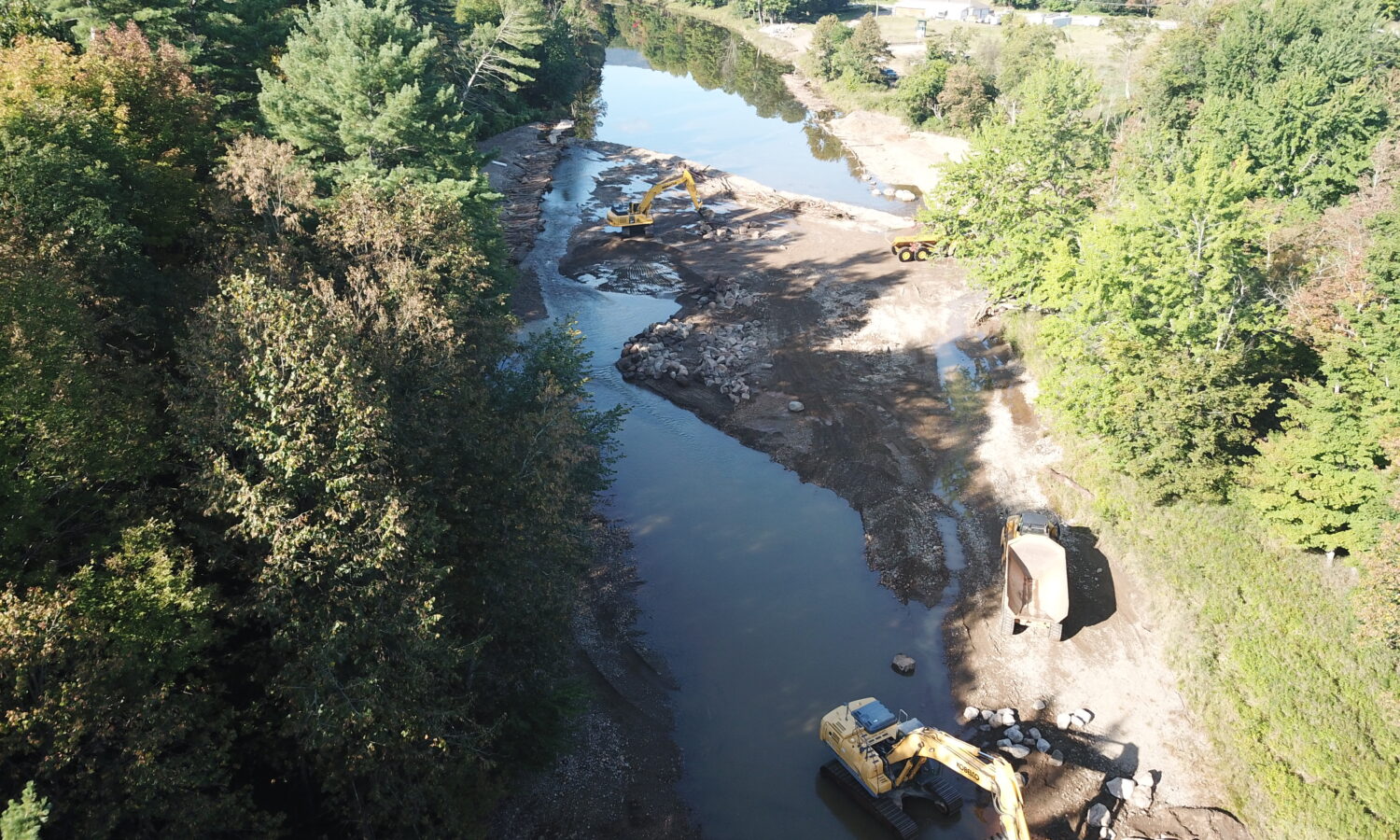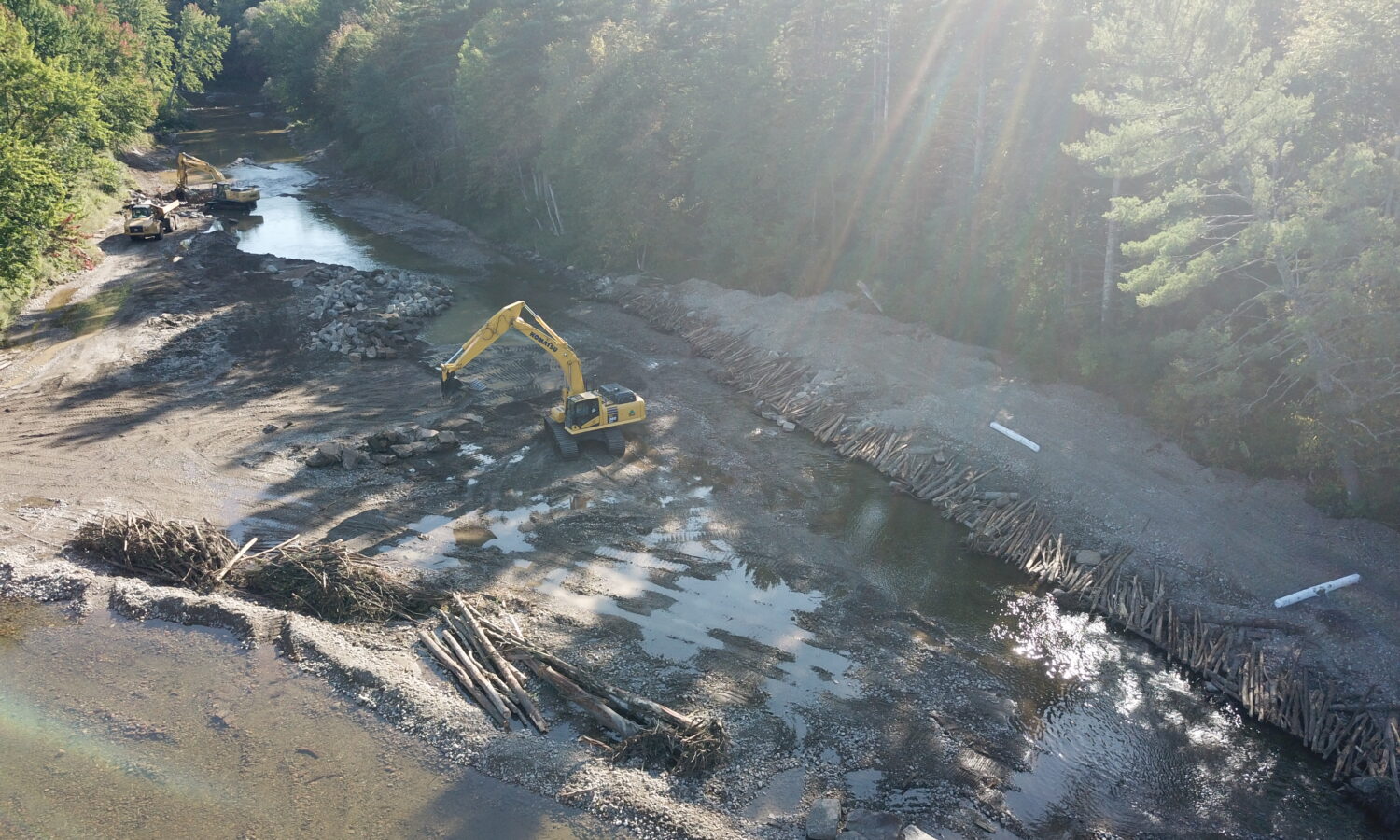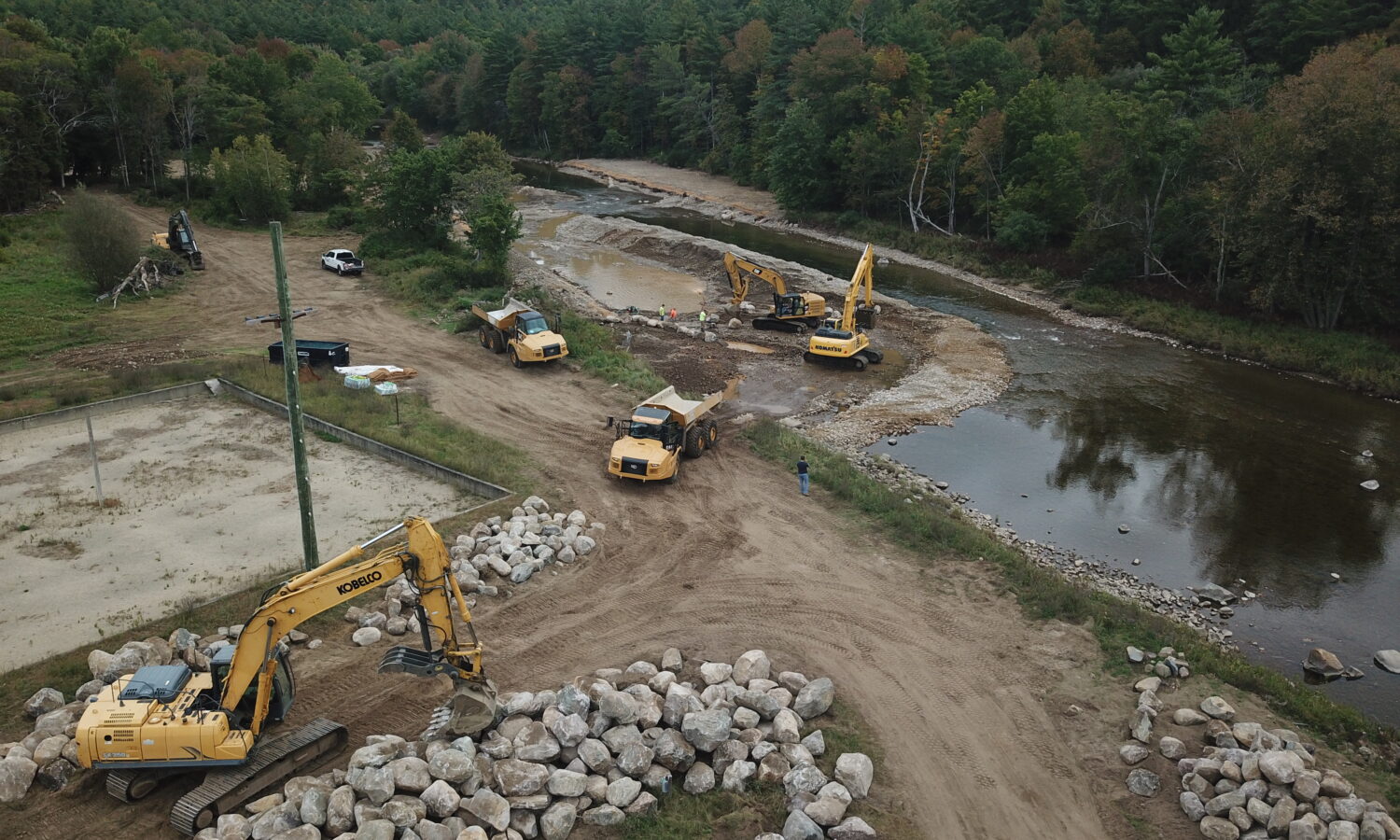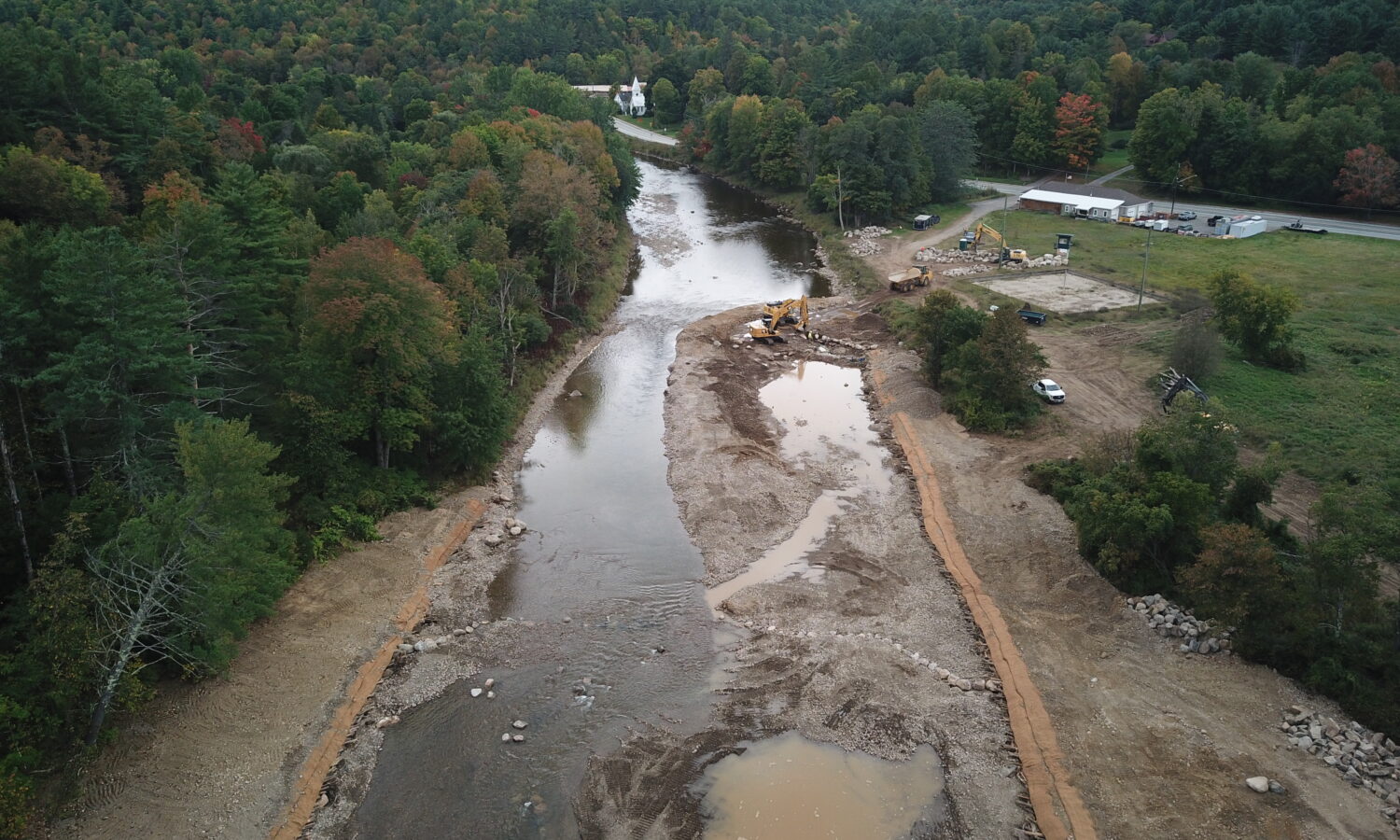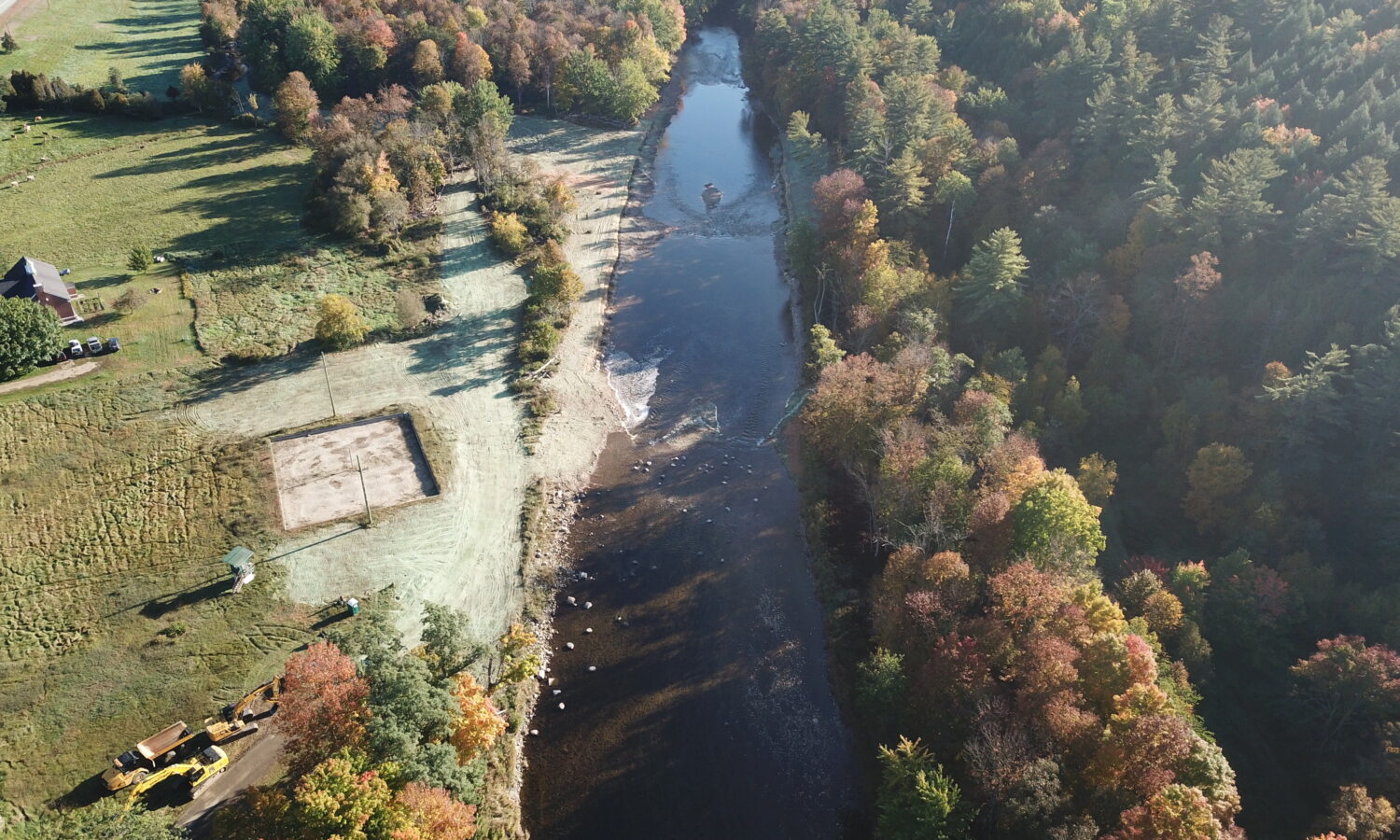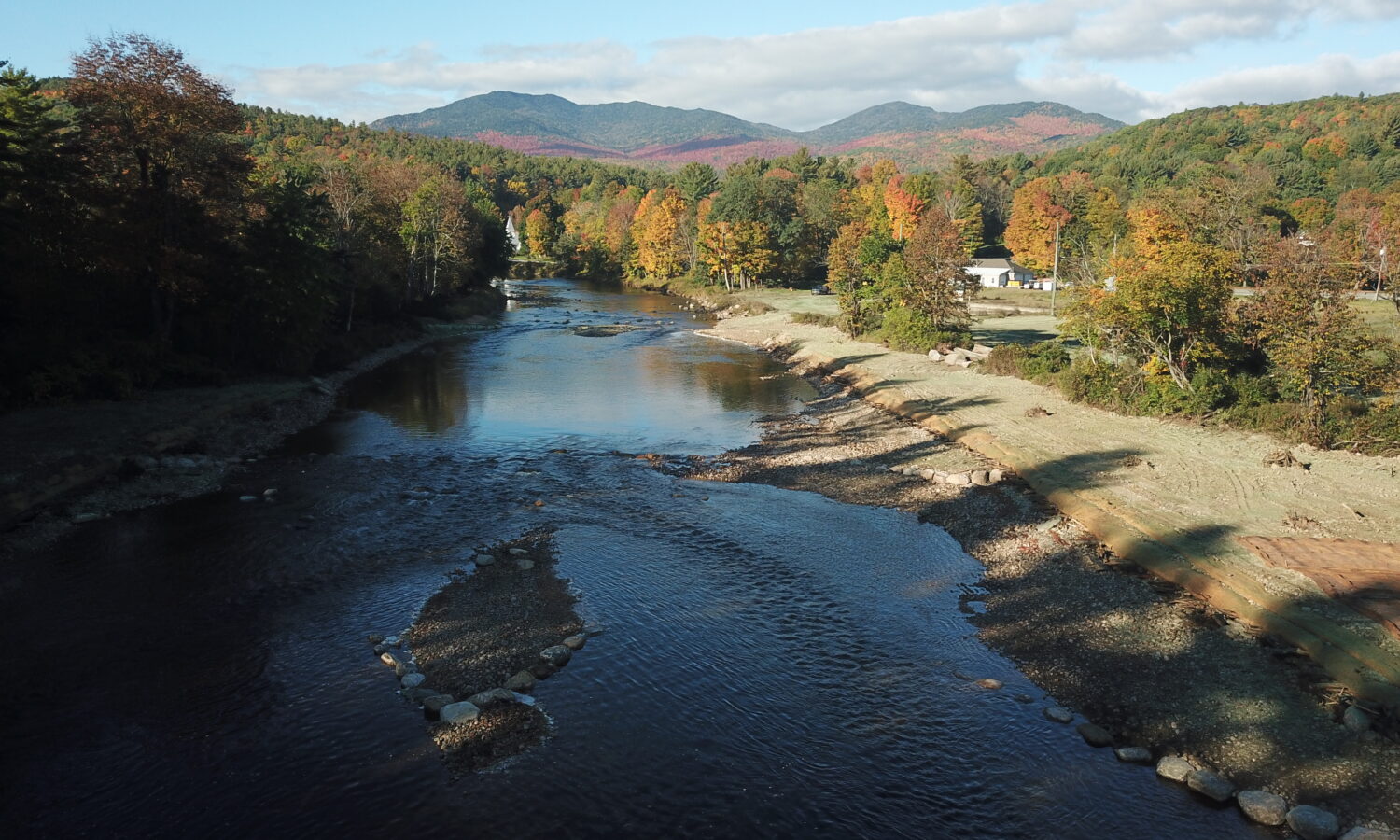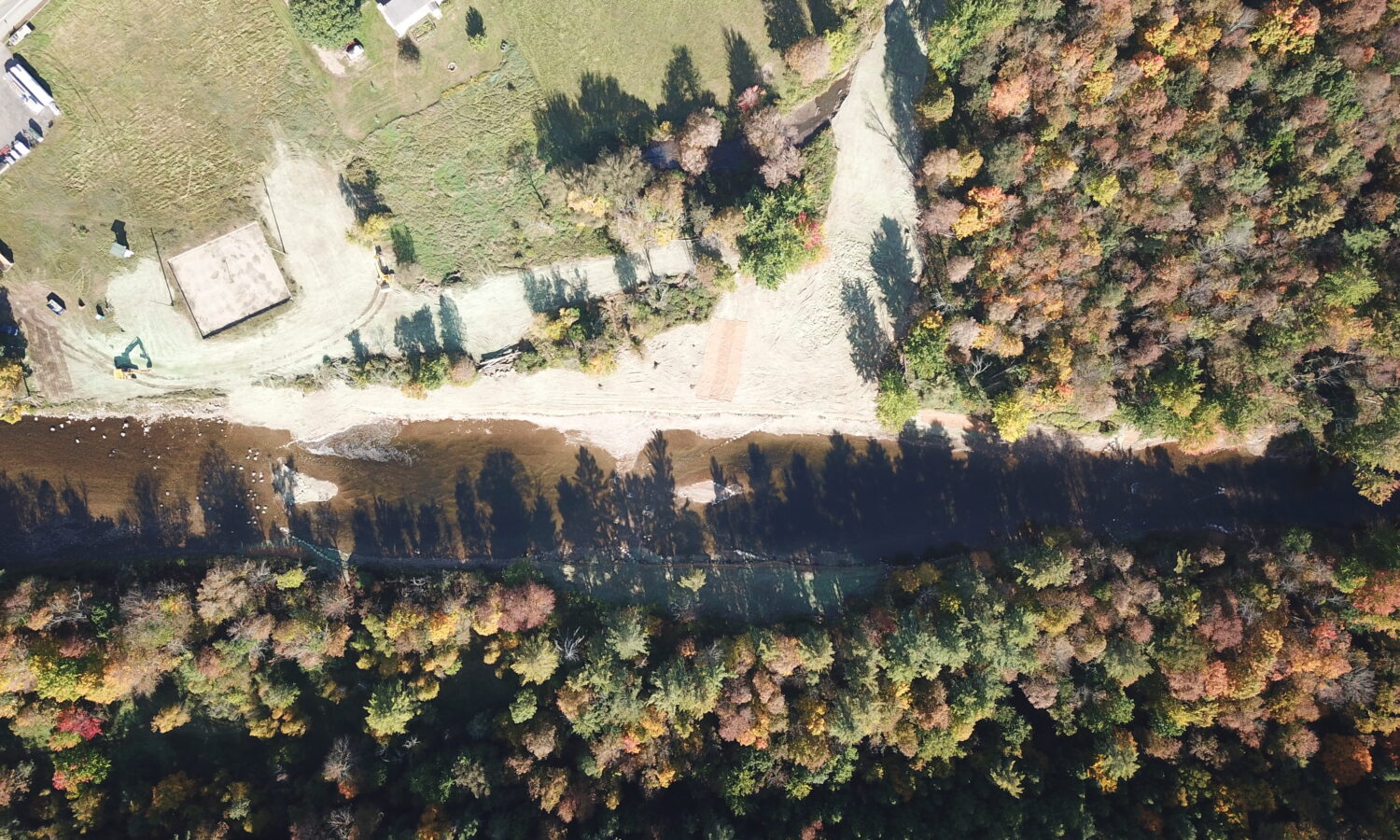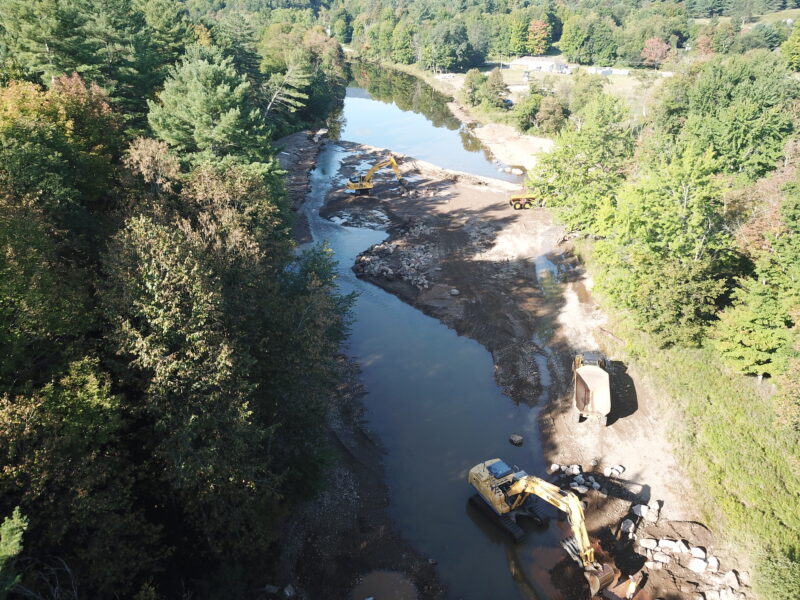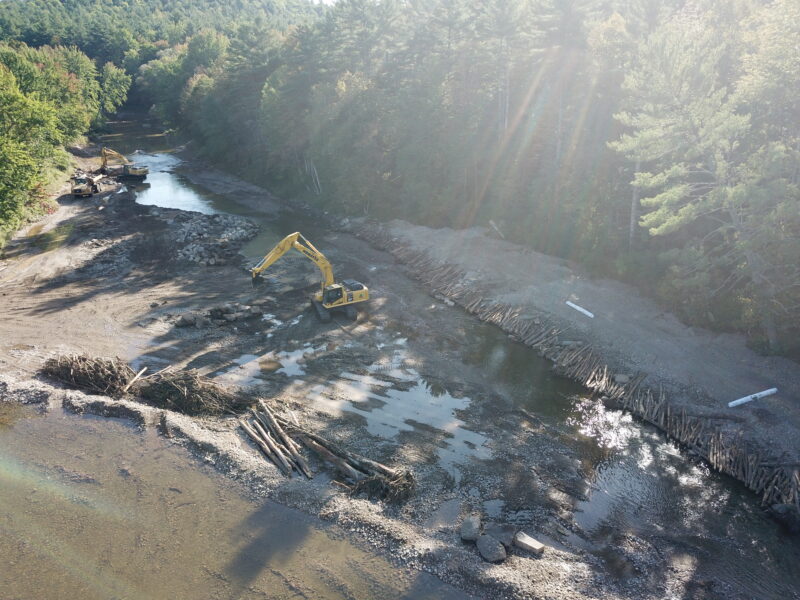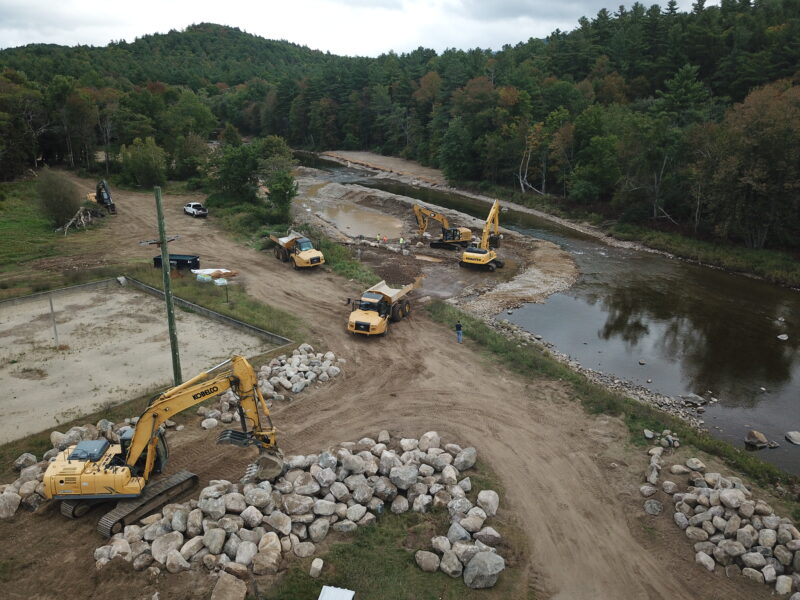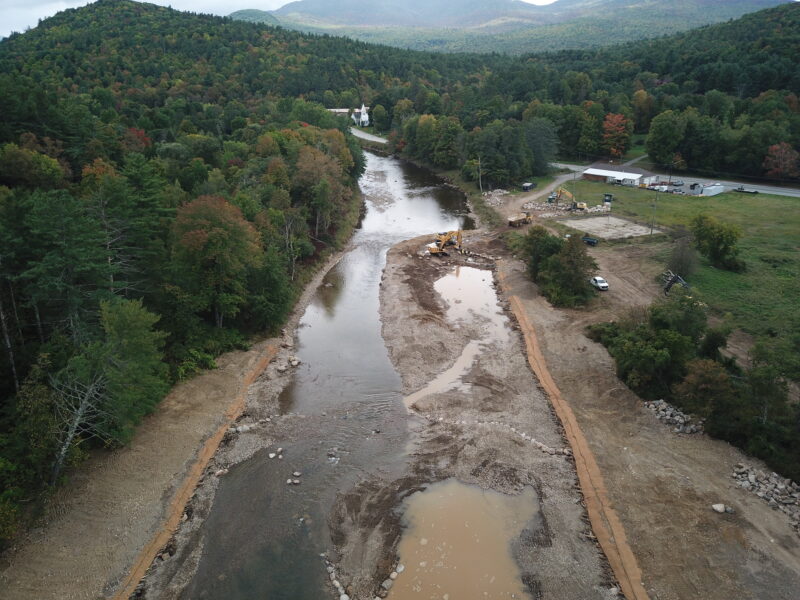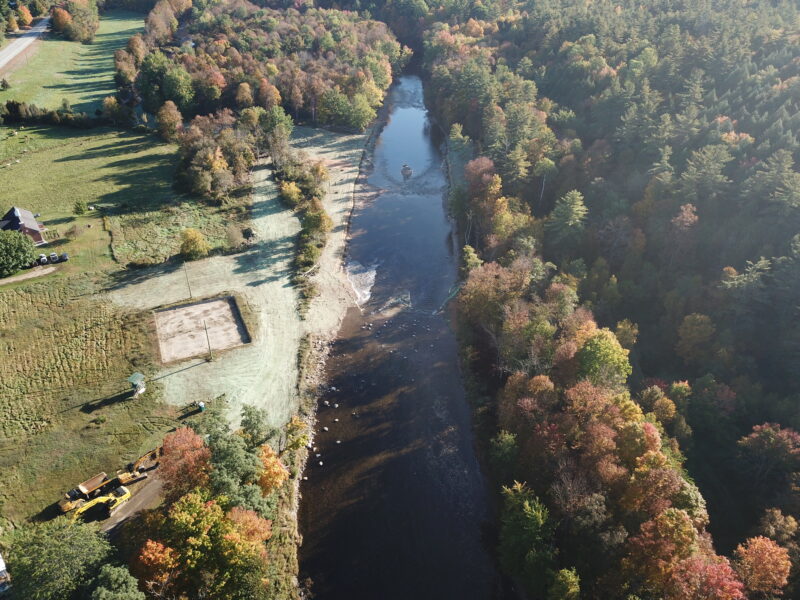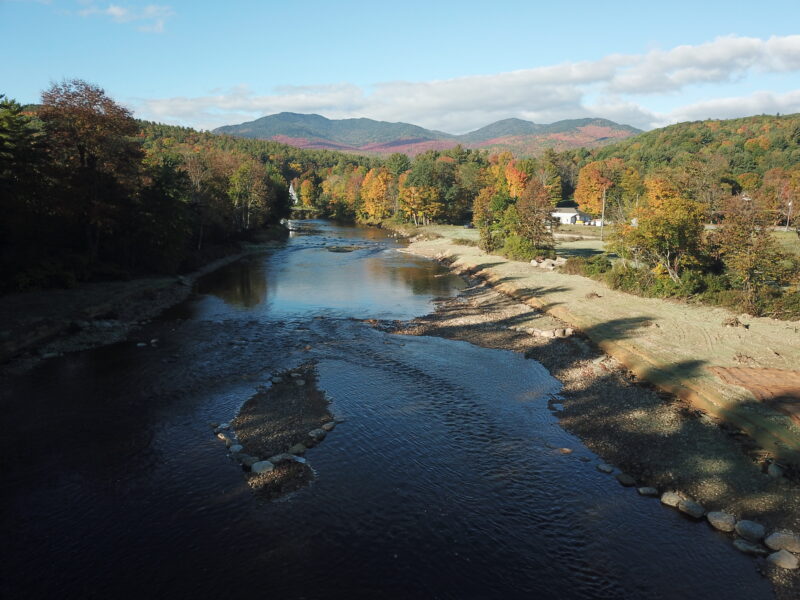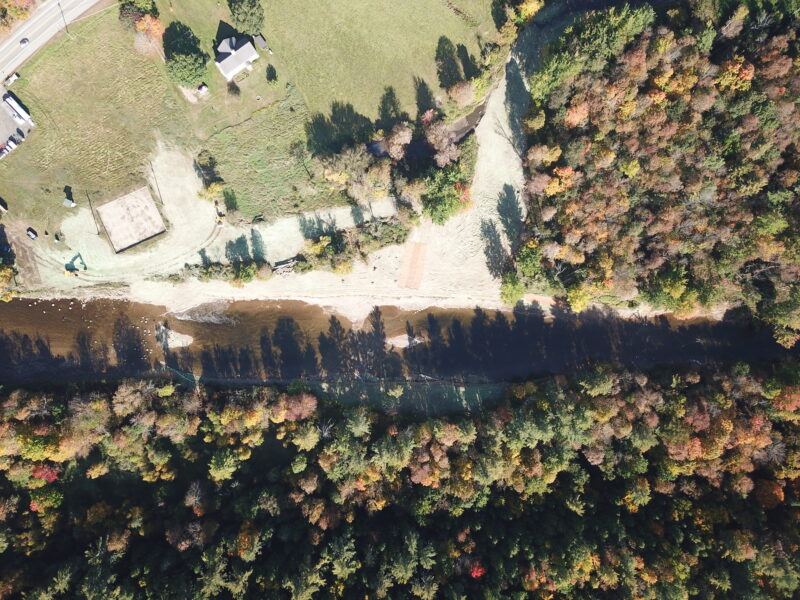Project Overview
Our team was selected to help restore the East Branch of the Ausable River and prevent future flooding and ice jams from causing damage to neighboring homes and property. After years of embankment erosion caused by flooding and ice jams, the river channel needed to be deepened and the banks widened to allow for excess water during inclement weather. We were tasked with removing the sediment that had built up in the middle of the river, also known as a cobble bar, that caused the embankments to erode. Flash flooding from tropical storms also contributed to significant stormwater erosion conditions. When a river gets wider and shallower, it is difficult to move rocks and other debris downstream, which can cause additional destruction to neighboring towns during a flood.
CHALLENGE
The team strategized that boulders would be placed in the middle of the river to direct flows away from the banks and keep the deepest part of the channel centered. Locating 2-5’ wide boulders proved challenging as they needed to be harvested elsewhere. Multiple locations were utilized to source the boulders and bring them to the project site. Procuring the necessary materials took time and additional coordination. A unique challenge included placing large construction equipment directly in the middle of the river. Employee safety was a top concern. GPS Survey equipment was utilized in the river to ease this issue.
SOLUTION
Our team was able to restore the original river grade in the center where a gravel bank had built up. Gravel banks were moved from the center out to the sides and were supported with trees and roots on the sides of the embankment. “W” weirs were built across the width of the stream to avoid damaging riverbanks and to help funnel the current. Toe wood walls were constructed along the banks, acting as a stabilizing retainer. A key milestone for the project was to finish the removal of all sediment, logs, and other debris and complete the installation of “W” weirs, toe jams and boulder piles before the October 1st deadline. Additional manpower was assigned to meet this goal as municipal delays occurred when obtaining permit acquisitions.
RESULT
Our team successfully restored the river to its natural state by deepening the channel and building floodplains along the stream, providing the river the necessary room to avoid causing future flooding and potential property damage. The project was delivered on time as a result of proper planning and consistent communication with key stakeholders. Our team was proud to have been a part of such an extensive movement to be more forward thinking in mitigating future flash floods and other climate change related impacts.

